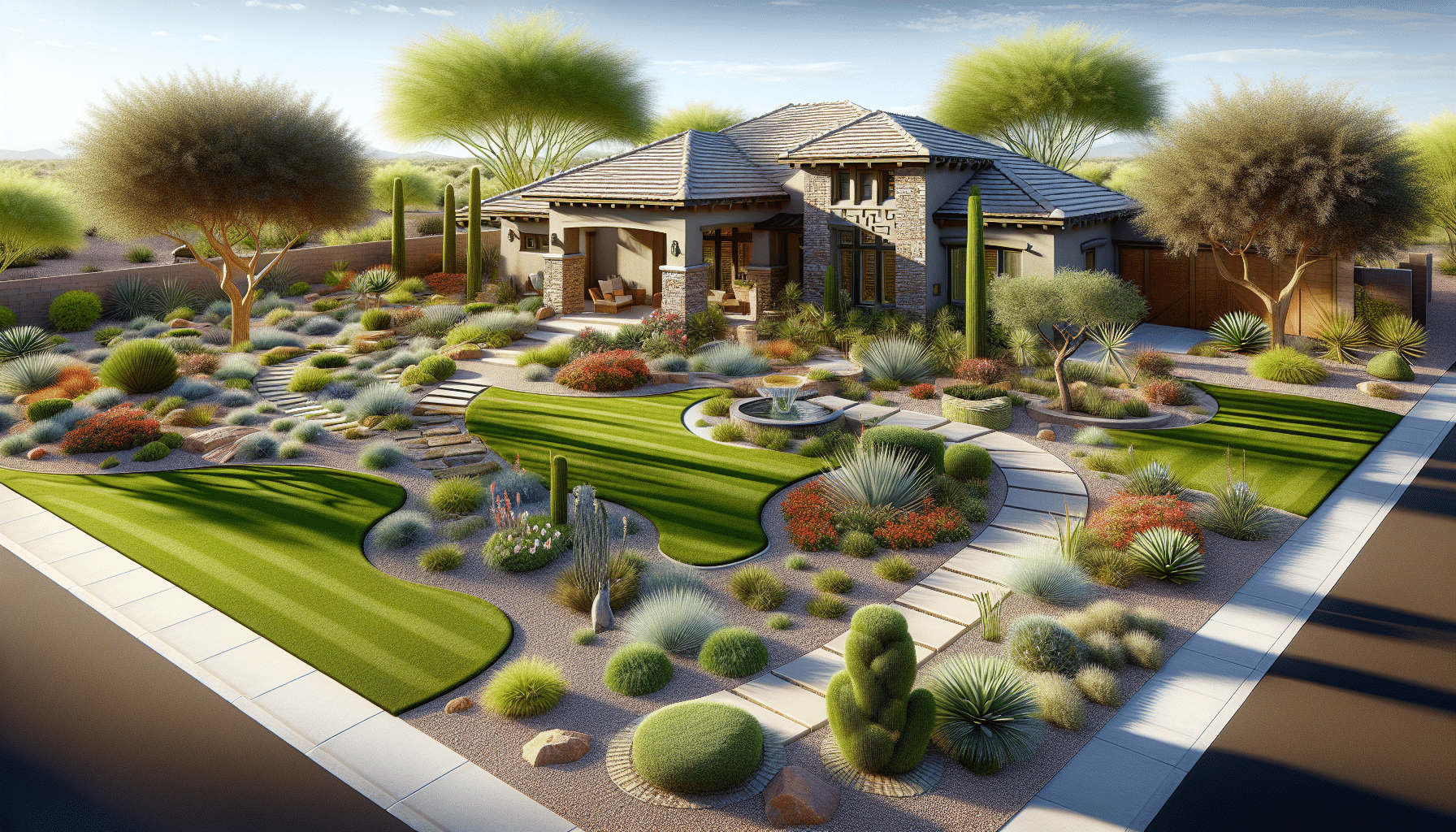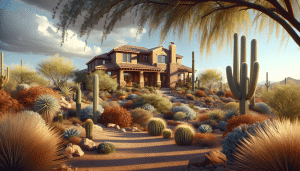We know how overwhelming Landscape Maintenance can be, especially in the scorching heat. Don’t worry; we’ve got your back! This blog post aims to help homeowners like you keep their outdoor spaces pristine. Red Mountain Landscaping is here to share essential tips for making your landscape thrive.
Contents
Regular Lawn Care
Your lawn is the crown jewel of your landscape, so it demands regular attention. Keeping your grass healthy requires more than just occasional mowing. Regular lawn care includes proper watering, fertilizing, and aerating to ensure that grass remains lush and green.
Watering early in the morning is the best practice as it allows moisture to seep into the soil before the sun’s heat causes evaporation. Additionally, using the right type of lawn fertilizer tailored to your specific grass type can make a big difference. Aerating the lawn periodically helps in reducing soil compaction and promoting root growth. Trust us; these small steps can have a huge impact!
Plant Selection and Care
The plants you choose define the character of your landscape. Let’s dive into some essential tips for plant selection and care that can make your garden flourish.
- Choose native plants that are acclimated to the local climate, ensuring they require less water and maintenance.
- Group plants by water needs so you can easily water each zone appropriately, benefiting both thirsty and drought-resistant plants.
- Mulch regularly to help retain soil moisture, reduce weed growth, and provide a neat appearance to your garden beds.
- Prune plants to remove dead or diseased branches, encouraging healthy growth and maintaining a pleasing shape.
By following these tips, your garden will not only look gorgeous but also be easier to maintain.
Pest and Weed Control
Pests and weeds can be a homeowner’s worst nightmare, but fear not! With a proactive approach, you can keep these unwanted visitors at bay.
Start by introducing beneficial insects that prey on pests, such as ladybugs and lacewings. These natural predators can help keep the pest population in check. For weeds, using a pre-emergent herbicide in early spring can prevent weed seeds from germinating. Consistent weeding, either by hand or using a hoe, will also keep the situation under control. Staying vigilant will save you a lot of headaches down the road.
Efficient Irrigation Systems
Efficient irrigation is essential for maintaining a healthy landscape without wasting water. Traditional sprinklers can sometimes do more harm than good due to uneven water distribution and evaporation losses.
Consider installing a drip irrigation system, which delivers water directly to the roots of plants, minimizing waste. Smart controllers can also be added to adjust watering schedules based on weather conditions, ensuring optimal moisture levels. Not only will your plants be healthier, but you’ll also save on your water bill.
Seasonal Clean-Up
Every season brings unique challenges and requires different maintenance tasks. Preparing for these changes can keep your landscape in top shape throughout the year.
In the spring, focus on cleaning up debris and dead plant material to make way for new growth. During the summer, be sure to monitor your irrigation system and adjust it as necessary. Fall is the time to prune trees and shrubs, as well as protect sensitive plants from early frost. Lastly, winter preparations should include mulching and covering tender plants to shield them from cold snaps. Staying on top of seasonal chores will help your landscape remain vibrant all year long.
Effective Use of Fertilizers
Fertilizers play a crucial role in providing your plants with the nutrients they need to grow strong and healthy. But, not all fertilizers are created equal, and knowing how to use them effectively can make a significant difference.
It’s essential to choose the right type of fertilizer for your plants, whether organic or synthetic, and apply it at the correct time of year. Over-fertilizing can harm plants by causing root burn and polluting the environment. Always follow the manufacturer’s instructions and consider performing a soil test to identify nutrient deficiencies. Remember, a little goes a long way!
Comprehensive Garden Design
A well-designed garden is not only beautiful but also functional and easy to maintain. Thoughtful planning and layout can streamline maintenance tasks and enhance the overall appeal of your landscape.
Start by considering the natural features of your yard, such as slopes, sunlight, and existing plants. Incorporate elements like pathways and sitting areas to create a harmonious flow. Installing landscape fabric under gravel or mulch can help prevent weeds and reduce maintenance. Consider using low-maintenance plants and ground covers to fill large areas with minimal effort. With a solid design, your garden will be a source of pride and relaxation.
Eco-Friendly Practices
Adopting eco-friendly practices helps preserve the environment and can make your landscape more sustainable. There are several easy ways to achieve this without compromising the beauty of your garden.
- Compost kitchen waste to create a rich, organic fertilizer that helps improve soil structure and nutrient content.
- Collect rainwater using barrels or other containers to provide a free, natural water source for your plants.
- Use organic pest control methods such as introducing beneficial insects or using neem oil, which avoid harmful chemicals.
- Reduce lawn size by incorporating native plants and ground covers, which require less water and maintenance.
By incorporating these practices, you’ll create an eco-friendly landscape that’s both beautiful and sustainable.
Keeping your landscape in top condition may seem daunting, but with these essential tips, you’ll be well on your way to success. For personalized advice and professional landscaping Services, Contact Us at 480-373-9312 or Request a Free Quote.




